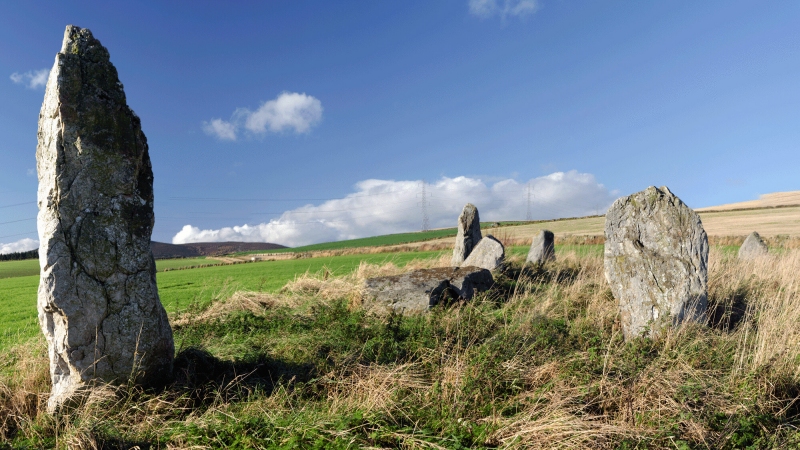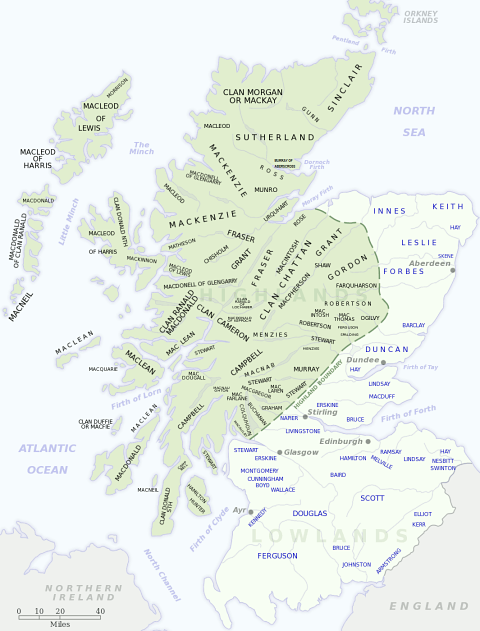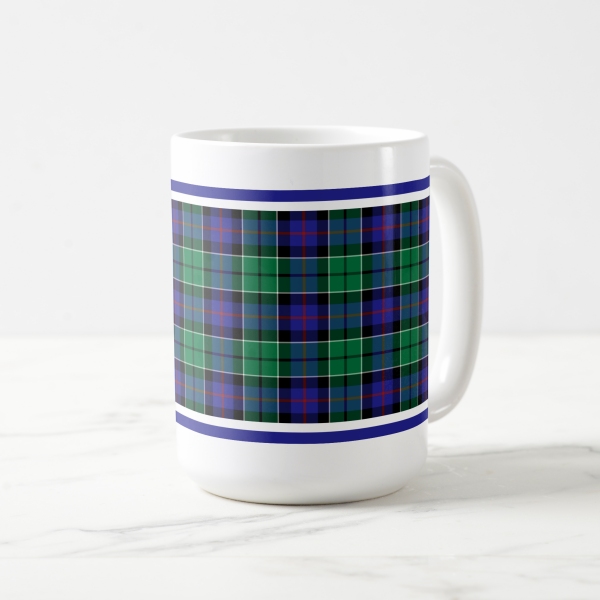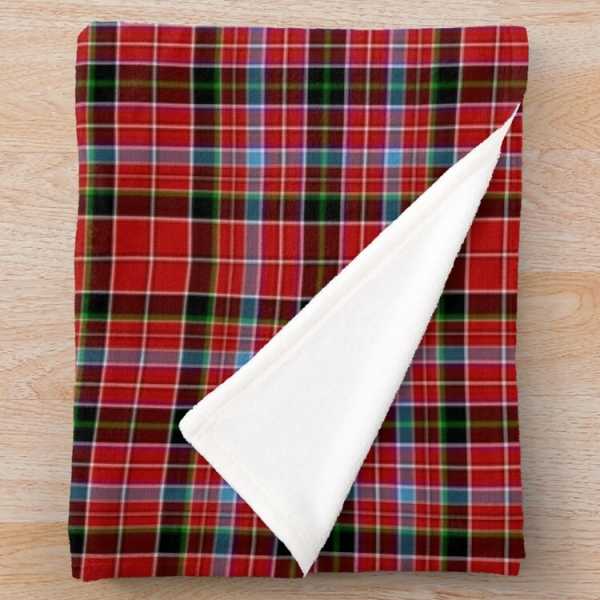
Motto: Grip fast
Historic Seat: Balquhain Castle
District: Aberdeenshire
Associated Surnames: Abernathy, Abernethy, Bartholomew, Cairney, Laing, Lang
Associated Tartans:
Early Leslie Genealogy and History:
(Excerpt from "The Scottish Clans and Their Tartans", James Grant, 1906)
Few Scottish surnames have made a great figure in Europe than that of Leslie. Four Scottish peerages once belonged to the clan, several of whom rose to the rank of Count in France, Poland, Russia, and Hungary. The first of the name on record was Bartholf of Leslie, proprietor of the lands of that name in the reign of William the Lion, 1165-1214. Sir Andrew Leslie of that Ilk, sixth in descent from Bartholf, was one of the Magnates Scotiae who signed that noble letter to the Pope in 1320, declaring that while one hundred Scotsmen remained alive they would never submit to England.
David, eighth of Leslie, was one of the hostages for the ransom of James I in 1424. George, tenth of Leslie, was the first Earl of Rothes, and was so created by James II inter 1445 et 1459. William third Earl, fell with his royal master at Flodden1. His second son, John Leslie of Parkhill, was taken prisoner at Solway Moss2, and ransomed for 200 merks sterling. George, Fourth Earl, accompanied James V to France when the latter espoused Magdalene of Valois. His son, Norman, Master of Rothes, after being engaged in the murder of Cardinal Beaton, was slain in battle in Picardy in 1554. The Earl died at Dieppe in 1558, not without suspicion of having been poisoned for political purposes.
John, seventh Earl of Rothes, carried the Sword of State at the coronation of Charles II in Scone Palace, 1651; led a Regiment of Horse at Worcester3; and joined the King in exile at Breda. After the Restoration he was High Treasurer and Captain of the Scottish Life Guards, and afterwards Keeper of the Great Seal and Lord High Chancellor. In 1680 he was created Duke of Rothes, but died the following year, leaving a daughter, the Countess of Haddington, whose eldest son, John, succeeded by entail to the Earl of Rothes, while Thomas, her second, carried on the honours of Haddington. John, ninth Earl of Rothes, was a distinguished soldier, and was successively Colonel of the Scots Greys and Scots Foot Guards.
Sir Alexander Leslie (first Earl of Leven, in 1641) Field-Marshal under Gustavus Adolphus4, was Governor of all the cities on the Baltic coast, and one of the most famous leaders in the Swedish wars. He afterwards led the armies of the Covenant and the Scottish Parliament. His title is now united with that of Melville.
Sir David Leslie (first Lord Newark, in 1660) was a veteran of the great Gustavus wars, and was a Major-General in the Scottish army at Worcester. The title has been dormant since the death of Alexander, fourth Lord, in 1791.
Sir Patrick Leslie of Pitcairlie, second son of the fifth Earl of Rothes, was created Lord Lindores by James VI in 1600. His title has been dormant since the death of John, the seventh Lord, in 1775.
In addition to Sir Alexander and Sir David Leslie, six other of the clan had rank in the army of Gustavus, viz., Ludovick Leslie, afterwards Governor of Berwick and Tynemouth for the Covenanters; Colonel John Leslie of Wardis; Colonel John Leslie of Ruthven's Regiment; Colonel Robert Leslie of "the Old Scots Regiment"; Colonel Alexander Leslie, son of the Field-Marshal; and George Leslie, Governor of Fecht, where he was killed.
A famous branch were the Leslies of Balquhain in Aberdeenshire. Sir George, the founder of it, got a grant of that estate from David II by charter, dated 1340. Four Counts Leslie sprang from this famly alone. The first, Count Walter, the son of the tenth Laird, was one of the slayers of Wallenstein, and by the Emperor Ferdinand III was made Field-Marshal and Governor of Sclavonia5. Leopold I made him a knight of the Golden Fleece, and sent him as ambassador to Constantinople.
Sir Andrew Leslie, third of Balquhain, had a bitter feud with the Forbesses, abducted the Laird of Innervin's daughter, known as "The Fair Maid of Strathaven," and was slain by the Sheriff of Angus in 1420. Sir William, seventh of Balquhain, rebuilt the old castle of that name, which had been burned down by the Forbesses, and died in 1545. Patrick, Count Leslie, twelfth of Balquhain, was Privy Councillor to James VII. He entailed the estate in 1698.
The Castle of Balquhain, a ruin now, is said to possess one of the finest echoes in Scotland.
(End excerpt)
Next page: Clan Lindsay
Footnotes:
1 The Battle of Flodden (1513): The Battle of Flodden Field was fought on 9 September 1513, in Northumberland England between an army of Scots under King James IV and an English army commanded by the Earl of Surrey. Read more about the Battle of Flodden at Wikipedia.
2 The Battle of Solway Moss (1542): The Battle of Solway Moss was fought in November 1542 in Cumbria, England between Scottish forces led by Robert Lord Maxwell and Sir Oliver Sinclair, and English forces, led by Thomas, Lord Wharton, and Sir William Musgrave. Read more about the Battle of Solway Moss at Wikipedia.
3 The Battle of Worcester (1651): The Battle of Worcester was fought on 3 September 1651 at Worcester, England and was the final battle of the English Civil War. Cromwell's army defeated King Charles II's army, of whom the vast majority were Scottish. Read more about the Battle of Worcester at Wikipedia.
4 Gustavus Adolphus: Gustav II Adolph, King of Sweden. Several Scottish brigades, who had been levied by King James VI, were under the military command of Sweden during the Thirty Years War. Read more about Scotland and the Thirty Years' War at Wikipedia.
5 Sclavonia: Archaic English for Slavonia, now part of Croatia.

Distribution of Scottish clans and families
View larger map at Wikimedia Commons

Browse the Clan Leslie Hunting Tartan Collection with home decor, personal accessories, crafting, paper products, and more.

Browse the Aberdeenshire Tartan Collection with clothing, home decor, accessories, electronics cases, and more.